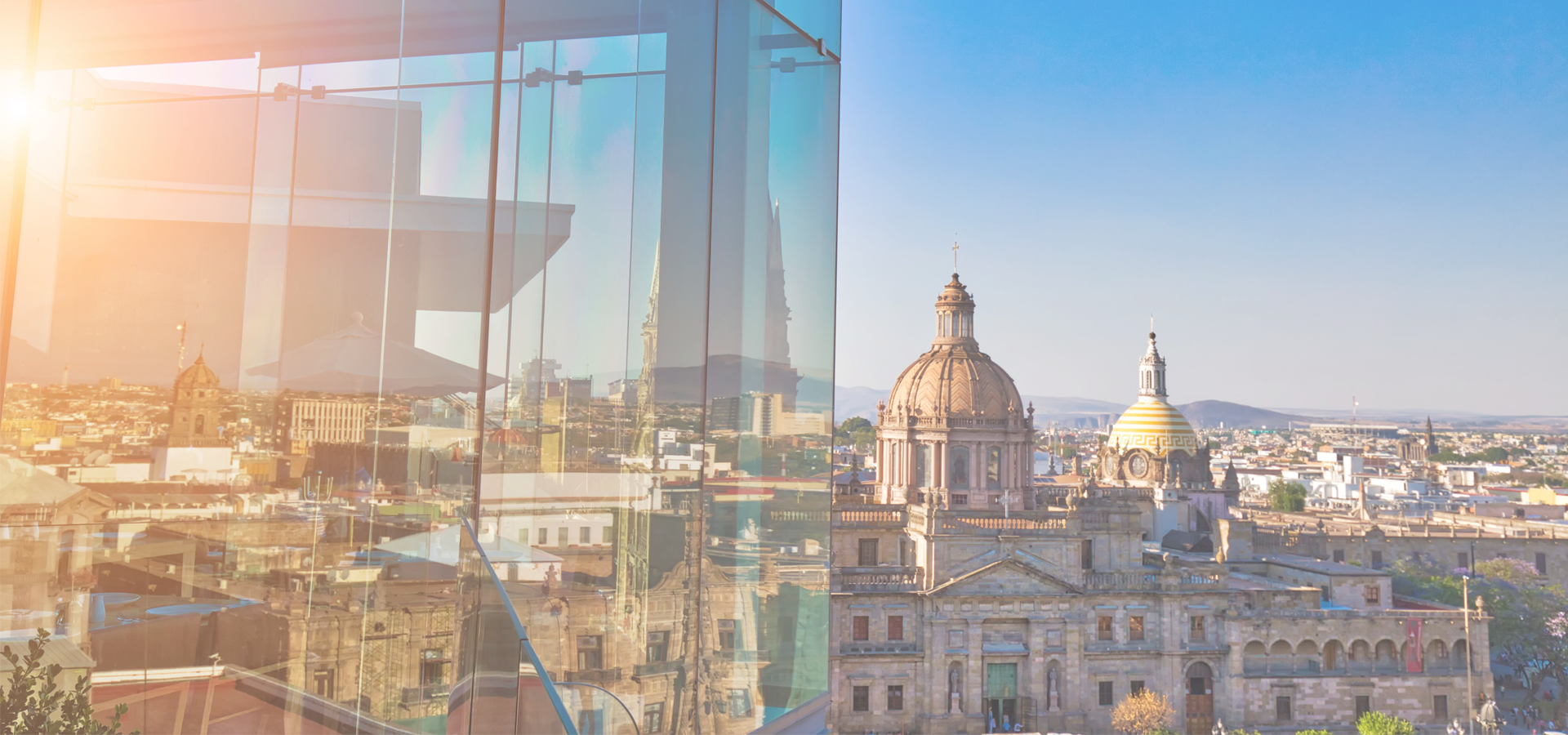Jalostotitlán, Jalisco, Mexico
🇲🇽 Jalostotitlán (Xālōztōtitlān, 'place of sandy caves') is a town and municipality located in the north-east corner of the state of Jalisco, Mexico, in a region known as Los Altos.
The municipality shares its border on the north with the municipality of Teocaltiche, the east with the municipality of San Juan de los Lagos, to the south with the municipality of San Miguel el Alto, to the south-west with the municipality of Valle de Guadalupe, and to the west with the municipality of Cañadas de Obregón.
The town is located in a midsection of the country, with semi-desert, arid lands to the north and more fertile lands to the south. Winters are relatively cold and summers are hot and rainy. The municipality also includes the towns of San Nicolás de las Flores, Teocaltitán de Guadalupe, San Gaspar de los Reyes and Mitic. In the centre of town are the churches that originate from the 16th century, when the town was first founded. Jalostotitlan it's also known for its religious tourism to Santa Ana de Guadalupe, for being the birthplace of the saint Toribio Romo.
Etymology The name "Jalostotitlán" is a Spanish rendering of the Nahuatl toponym Xālōztōtitlān, a locative which can be loosely translated as "place of sandy caves", or more accurately, "in the place of caves of sand" (from xālli "sand" and ōztōtl "cave"), referring to caves with sandy deposits from which sand was extracted.
History In 1164, the residents of the area (mostly from the Tecuexe and Caxcan tribes) resisted Aztec advances, who had just settled in nearby Teocaltiche for a period of 40 years before moving on to Tenochtitlán.
The Spaniards first arrived in the area during the conquest of Tonalá under Captain Pedro Almíndez Chirino with the 350 Spaniards and 500 Purépecha and Tlaxcaltecs under his control.
After a series of rebellions, the area was placed under the Spanish crown in 1541. The town of Jalostotitlán was founded by Fray Miguel de Bologna in 1544.
After the Mexican War of Independence, Jalostotitlán gained the status of a town in 1838. The municipality of Jalostotitlán was created on 21 May 1872.
Jalostotitlan is the location of sites associated with canonized Mexican Catholic priests Toribio Romo Gonzalez and Pedro Esqueda Ramírez, who were murdered by federal troops during the Cristero War or La Cristiada
Jalostotitlán was elevated to city status on 1 September 1970 and made the seat of the municipality.
Jalostotitlán is the birthplace of famed General José María González de Hermosillo, who fought in the Mexican War of Independence. The city of Hermosillo, Sonora is named in his honor. It is also the birthplace of famed poet Alfredo R. Plascencia Jáuregui.
Population The municipality of Jalostotitlán has a population of 32,678 according to the 2000 census, with a population of 24,890 in the municipal seat. Similar to the rest of the Los Altos region, Jalostotitlán did not retain a large indigenous population. Only two-tenths of one percent of inhabitants speak an indigenous language according to the census. Most of the residents can trace their ancestry to Spain and France
Economy The main activities in the municipality are agriculture, cattle-farming and the services industry. In the past 15 years Jalostotitlán has become a relevant manufacturing centre, producing shoes, leather goods and dairy products. One of the main sources of income for the families of the town, are the "remesas" or remittances of relatives that live abroad (mainly in the United States).
Annual fiestas There are two fiestas that are celebrated in Jalostotitlán once a year. The "Carnaval" that is held early to mid-February and the other in August (August 1–15) is the "Fiestas De La Virgen De La Asuncion" or "La Quincena", a religious festival.
During the Carnaval, there are many activities and events throughout the week. Carnaval has concerts, also known as "palenques". Bullfighting, cockfighting and parades are part of the activities. "Terrazas" or outdoor bars are found in the plaza accompanied with live bandas and mariachi music.
The Fiestas in August include mariachi music, Caxcan native dances, allegoric and big-rig truck parades and at night a "Castillo" or tower with fireworks every night. People from United States (mostly from California and other western states) go there to visit families during these festivals.
Guadalajara, Jalisco

Jalostotitlán has a population of over 32,678 people. Jalostotitlán also forms part of the wider Los Altos de Jalisco Region which has a population of over 925,648 people. It is also a part of the larger Jalisco State. Jalostotitlán is situated near Lagos de Moreno.
Twin Towns - Sister Cities Jalostotitlán has links with:
🇲🇽 San Miguel el Alto, Mexico🇲🇽 Dolores Hidalgo 21.15
🇲🇽 Jesús María -102.35
🇲🇽 Jacona de Plancarte -102.3
🇲🇽 Aguascalientes City -102.3
🇲🇽 Aguascalientes -102.295
🇲🇽 Lázaro Cárdenas -102.183
🇲🇽 Atotonilco El Alto -102.5
🇲🇽 Zacatecas City -102.567
🇲🇽 Tepatitlán de Morelos -102.75
🇲🇽 Tepatitlán -102.75
Locations Near: Jalostotitlán -102.467,21.1667
🇲🇽 Tepatitlán de Morelos -102.75,20.8 d: 50.3
🇲🇽 Tepatitlán -102.75,20.8 d: 50.3
🇲🇽 Arandas -102.3,20.7 d: 54.7
🇲🇽 Lagos de Moreno -101.922,21.363 d: 60.5
🇲🇽 Atotonilco El Alto -102.5,20.533 d: 70.5
🇲🇽 Aguascalientes City -102.3,21.874 d: 80.5
🇲🇽 Aguascalientes -102.295,21.882 d: 81.4
🇲🇽 León -101.683,21.122 d: 81.5
🇲🇽 Jesús María -102.35,21.967 d: 89.8
🇲🇽 Zapotlanejo -103.071,20.625 d: 87
Antipodal to: Jalostotitlán 77.533,-21.167
🇲🇺 Centre de Flacq 57.718,-20.2 d: 17952.3
🇲🇺 Mahébourg 57.7,-20.407 d: 17953
🇲🇺 Rivière du Rempart 57.633,-20.05 d: 17941.6
🇲🇺 Curepipe 57.517,-20.317 d: 17932.9
🇲🇺 St Pierre 57.517,-20.217 d: 17931.6
🇲🇺 Port Louis 57.5,-20.15 d: 17929.1
🇲🇺 Vacoas-Phoenix 57.493,-20.3 d: 17930.2
🇲🇺 Mauritius 57.499,-20.162 d: 17929.1
🇲🇺 Moka 57.496,-20.219 d: 17929.5
🇲🇺 Port-Louis 57.496,-20.165 d: 17928.9